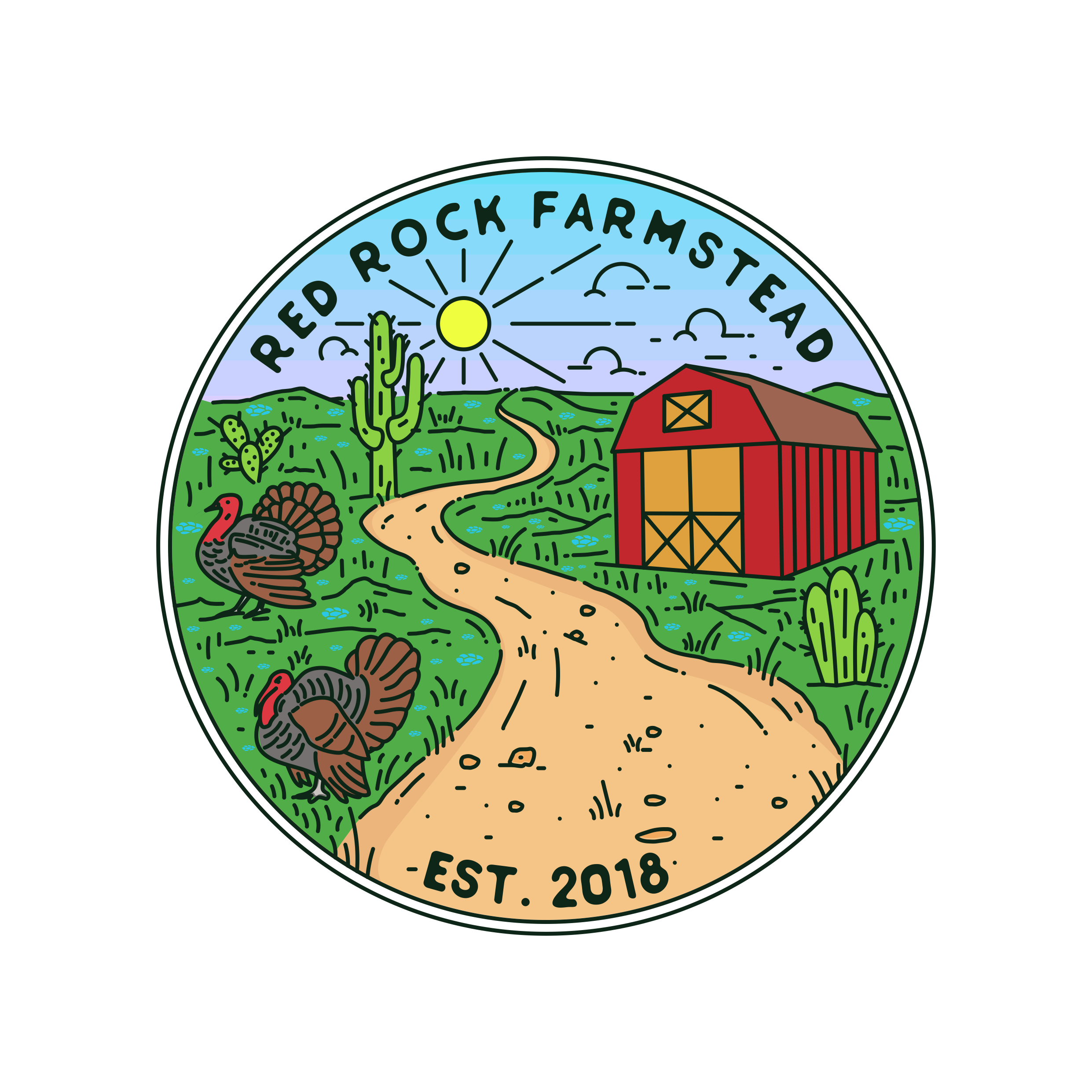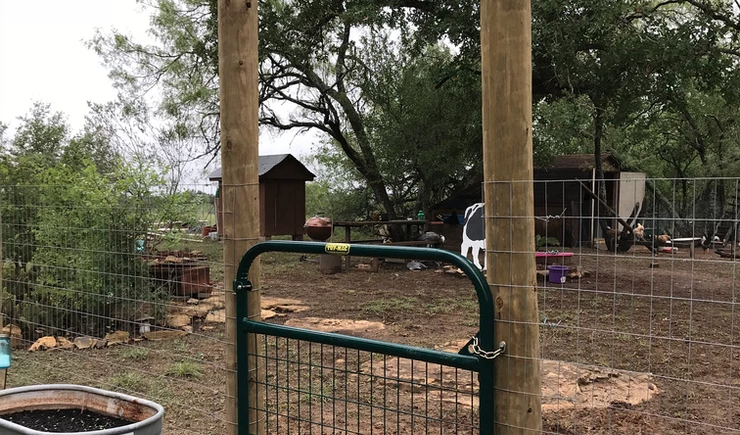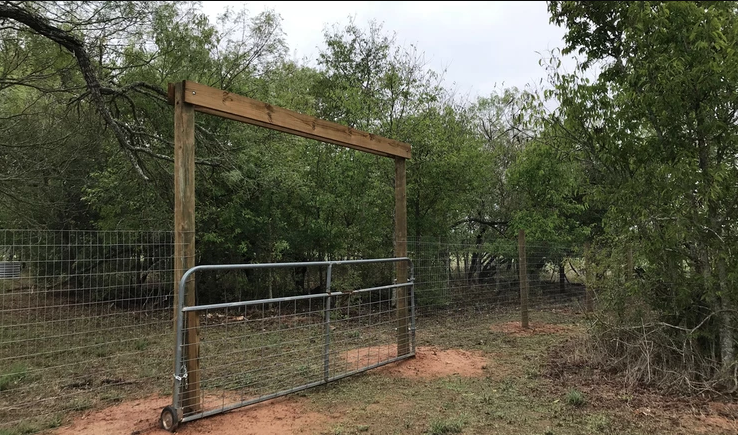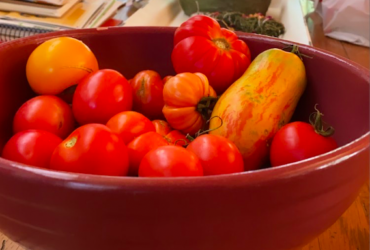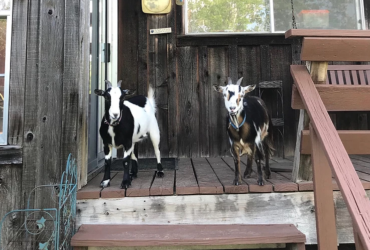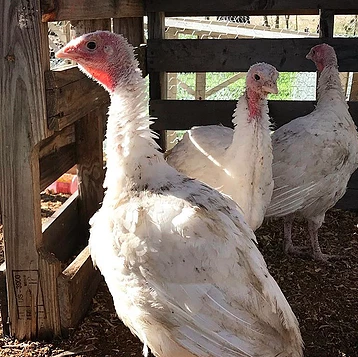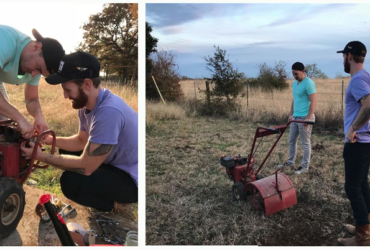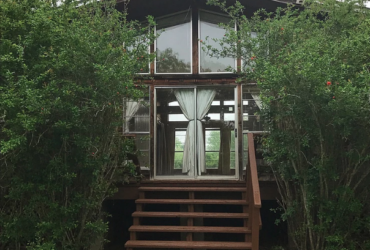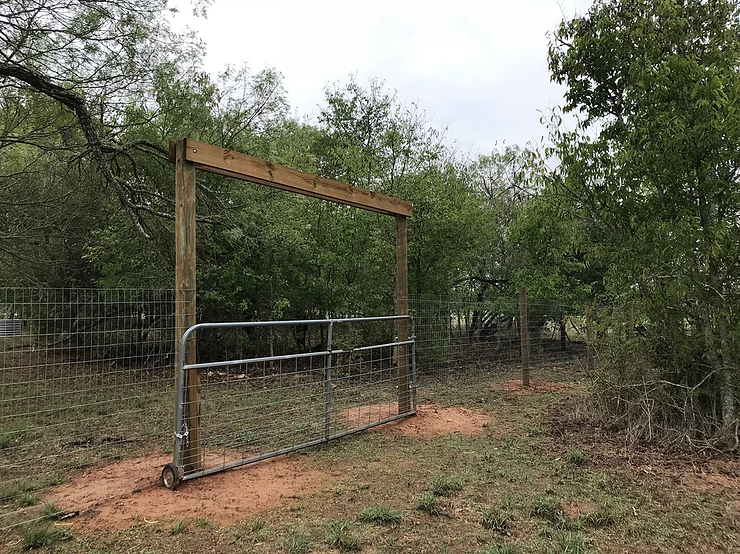
Homesteading Projects, Stories
Predators & Dogs & Fences, Oh MY!
As an Amazon Associate I earn from qualifying purchases.
As some of you know if you’ve been following my various rants and blog posts, we’ve had a big problem with bobcats. When we first moved in and had a few birds free-ranging in the front yard, we had 2 disappear with only a cloud of feathers left behind. I wasn’t sure what had taken them… I suspected a fox because I had seen them on the property before.
Then, once we moved some of the big chicks outside and I had gotten a few more adult birds, one or two would be gone without a trace. I quickly realized this was going to be an ongoing issue and free-ranging wasn’t going to be as easy as I hoped it would be. Depending on where you live, you might be able to let your birds out with zero issues or a rare casualty, or perhaps you have a family of bobcats living on your property (ie. me).
So, Dusty and I set up a trail cam pointed out into the yard from a tree next to the chicken run, and low and behold a few days after setting up the cam we captured this big kitty roaming about.
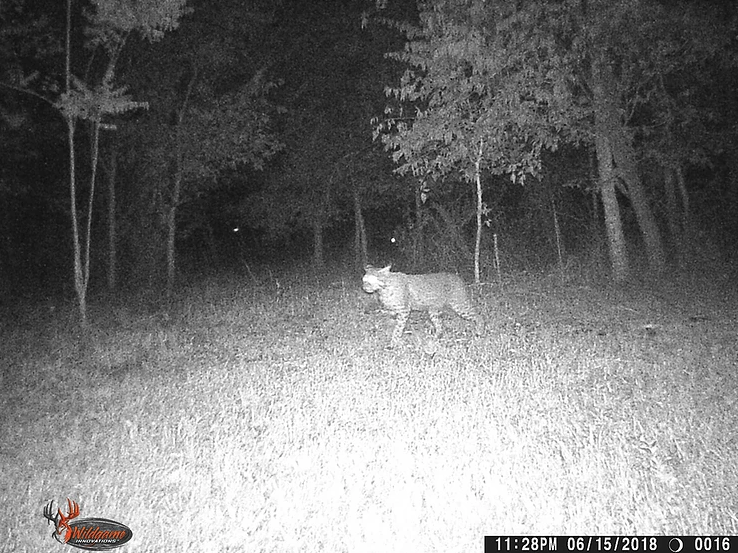
Now, we knew we had to do something. This wasn’t going to be a once-in-a-while occurrence. The bobcat knew where the birds were and would frequent the area for a free buffet. They were locked up at night, but birds were disappearing during the day, usually in the afternoon or early evening. The cat was bold and not afraid.
I even saw it multiple times. One time I was home, right as I was about to walk out the front door to go grocery shopping around 2pm, and I saw the birds scatter. Never a good thing to see. So I dropped my purse and ran out to where the trails of feathers usually appeared. I leaned down and looked into the trees, where I saw a big bobcat not 30 feet from me chewing on a hen. It took one look at me, dropped the bird, and took off into the forest.
So I knew a few things at this point. The bobcat was bold, but pretty easily scared. I knew what direction it came from and what path it took. I got pretty good about watching the birds and being outside with them when the attacks usually took place, but Dusty and I both knew we had to make some changes and the birds continued to disappear.
We thought about building an enclosed run, but honestly I still wanted to let the birds roam free somewhat. Part of the joy of having chickens for me is being able to see them run around and eat bugs and enjoy the nice big yard we have for them. So we decided instead to build a fence.
Knowing that bobcats can easily jump and climb, we knew this wouldn’t keep the cat out 100%, so we decided also that getting a livestock guardian dog (LGD) to keep in the enclosed fence area with the birds would be a great deterrent. Of course, things don’t really happen as planned, like ever, in this household, and we ended up with 2 mixed breed puppies instead of an LGD.
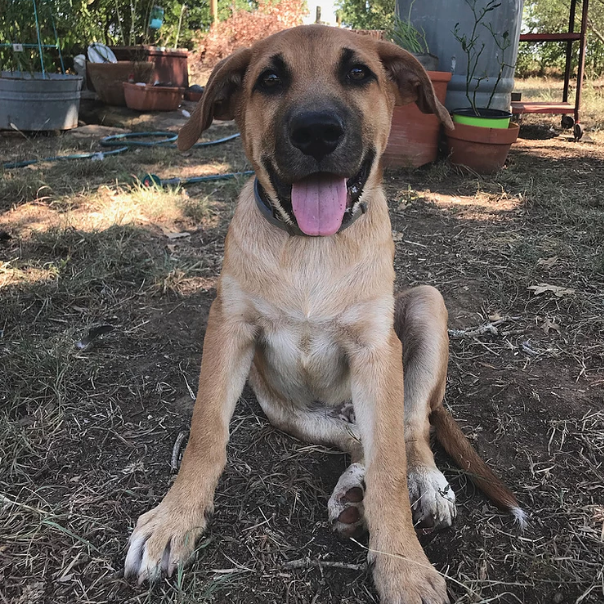
Supposedly they are part Great Pyrenees, but that doesn’t really matter to me honestly. From everything I’ve read, even pure LGDs are sometimes not great poultry dogs. They don’t quite bond to birds they way they would a sheep or goat. I’m not saying it can’t be done, but with any young dog, you have to take precautions when training puppies around birds. The small birds flapping and running around is sometimes just too tempting for a young dog. My goal is to ‘bird-proof’ them and train them to completely ignore the birds. I just want them in the vicinity to deter and wandering bobcats or ‘yotes.
So far they are really great puppies. They are calm and VERY smart (not to mention incredibly sweet). They know what I’m saying to them and listen very well. The only issues arise when I’m not diligent enough in supervising them. Sometimes I will get distracted in the house and I will peek outside and find them guzzling down chicken feed or trying to chase a chicken. There have been a few casualties, I’m not going to lie. I just have to be more consistent with training them and monitoring them. It doesn’t seem like they really want to kill birds, it seems like they get bored and chase a bird and want to pin it down and lick it and observe it, accidentally injuring it in the process.
These losses, however, have been way WAY less than the numbers of birds we have lost to the bobcat. I think the dogs have killed 2 chicks in the time that we’ve had them. They’ve pulled out a few more feathers than that, but only 2 deceased birds vs the tens of birds we were losing with the bobcat. Before the fence was built at the tail end of the bobcat attacks, we were losing 4-6 birds a week to the bobcat.
Here are a few photos of our lovely new fence. Quoted by Lowe’s, it would have cost us $5000-6000. Of course, they probably would have used the sturdiest, best materials and it would have been warrantied. We built it ourselves for about $1500.
The fence was built to block in the SW corner of our property which already had posts + barbed wire. So the new fence we built was about 300′, and we fenced over the barbed wire with woven wire so the dogs couldn’t get out that way either. That was also about 300′.

The brand new 300′ portion of the fence is made up of 5′ high welded wire fencing with 8′ posts set 2-3′ deep into the ground. The drive-in gate and walk-in gate posts are 12′ tall set about 4′ deep. Rule-of-thumb is to set your posts about 1/3 into the ground from their total height. Our awesome neighbor with a badass tractor helped us dig the fence posts (thanks Wade!!!!!).
The first step was to mark out where the fence was going to run. Dusty did this by staking wooden stakes on the corners, running fluorescent string around the perimeter (to get a nice straight line), and then marking the spots on the ground where the holes were going to be dug. Once the holes were dug is was time to set the posts. We held a post in place, made sure it was level, scooped some dirt in and tamped it, made sure it was level again, then filled up the hole with the remainder of the dirt and tamped all around making sure the post was held tightly in place.
For the taller posts and corner posts, we emptied 2 bags of concrete into the holes, wet it, and mixed it around. Then, covered the rest of the hole with dirt. We wanted these corner posts and tall posts to be extra sturdy. You don’t even need to wet the concrete if you don’t want to. The moisture from the surrounding dirt will solidify it over time, but we went ahead and moistened it slightly.
After all the posts were set, Dusty placed large boards over the walk in and drive in gates and bolted them in. Then, we placed beams in between the corner posts, which were later tightened down by wire and ratchets going diagonal between the corner posts. (Hard to describe so I’ve shown it below!!) The beams brace the corner posts together so they are super strong and you are later able to tighten the wire fencing onto it.
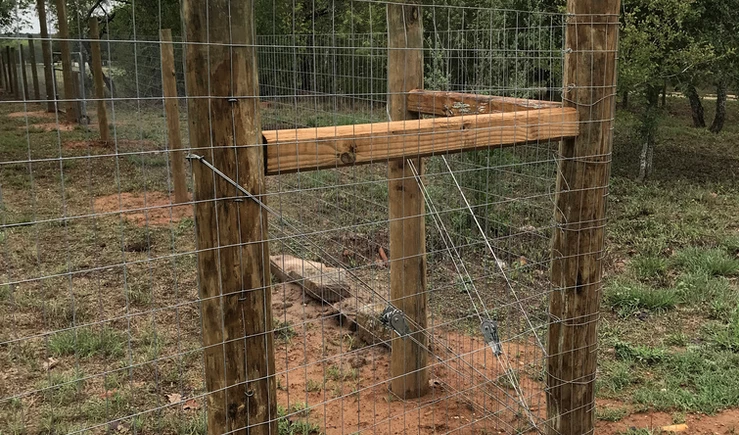
You can see the wire ratchets going diagonally between the corner posts here. Tightening these wire pieces helps to sandwich the beams that go horizontally in between the corner posts.
So once the corners were tightened, we could run the wire fencing. Dusty trimmed a length of the fencing, making sure there was a generous portion at the opposing end so that we could attach it to an end post for tightening. He clipped some of the wire lattice out so we could wrap the end pieces and twist them around the corner posts, then used a fencing stretcher to pull the opposite length of fencing taut. We sandwiched the end piece of fencing (the one that wasn’t wrapped around a post yet) between a fence stretcher (fence stretcher shown on the side!) and then used straps and ratchets attached to the other end.
Once the wire was tight, Dusty clipped the other end of the wire and wrapped it around the end post. We used fence staples and hammered the wire in place. Dusty also ran a tight wire around the bottoms of each fence portion to insure the bottom of the fence was tight and couldn’t be pushed out by dogs trying to escape or predators coming in.
The finishing touch was to hang both the walk in gate and drive in gates!
With the intense heat and amount of manual labor this fence took, the project lasted a few weeks total. It was difficult working on the fence in such intense weather, so that slowed us down a bit. It took a lot of hard work, since it was a large portion of fencing, but I love how it looks and it has served its purpose well! I didn’t want to use t-posts, since the fence is right in the front yard and can be seen out the front sliding door. I much preferred the look of wooden fence posts. This can certainly be done slightly cheaper with tall t-posts, but for our purpose we chose wooden.
As for the other 300′ portion of fencing to cover the barbed wire, Dusty simply had to trim back any brush, stretch the fencing out, and tighten it using the fence stretcher. He attached the wire to the existing metal t-posts with baling wire. This only took 1 day to complete. We also ended up staking the bottom of the woven wire (shown to the right) down because the dogs could easily push under it.
So overall, this combination of a new perimeter fence + having dogs in the yard has immensely helped the predator activity on our property. We haven’t lost a single bird to a predator since the fence has been completed.
Before the fence was completed, we had also looked into removing the bobcat completely from the property but a) in TX it is not legal to capture a predator and relocate it (mostly because almost all of TX is private property and you would need permission and permits to release the animal) and b) bobcats can be super difficult to trap and/or hunt. It seemed like the second we paid attention to it, it was invisible. They’re very attuned to things being out of place, smells, etc. So it is much more difficult than setting a trap and finding it in the morning. I haven’t seen it since so hopefully it is spending its energy on easier meals now.
The dogs are still young and I can’t leave them alone with the birds 24/7, but that is what we are hoping to achieve in the coming months. Currently, they spend puppy nap time and bedtime in our converted air-conditioned shed, which has a doggy door and a small fenced in area so they can go inside and outside as they please. Their current routine is as follows:
1. Wake up in laundry shed aka puppy room ~6:30am.
2. I move them to the fenced area so they can run around and get their energy out and go potty.
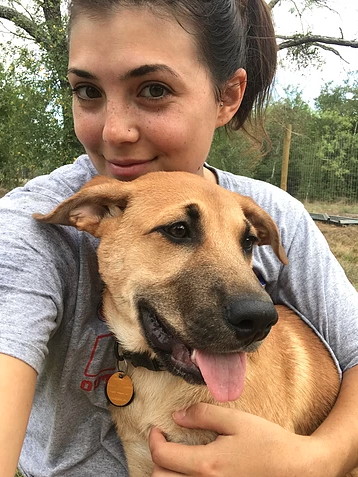
3. I let birds out and do routine animal chores all while keeping an eye on pups. They are usually sprinting around like crazy with our other dog, Ellie.
3. Puppies eat breakfast outside in the fenced area after they have had a chance to stretch their legs.
4. I keep an eye on puppies as I do light chores in the house. Ellie either stays out with them to play or comes in with me depending on what the dogs are doing.
5. Once puppies seem to be winding down, they like to take a nap around 10-11am. I move them back into puppy room to nap for a few hours.
6. During puppy nap time I get real work done where I can actually be focused.
7. Around 3-4pm puppies wake up and I let them back out into fenced area. I’ll play with them, train them, and/or garden or do other outside chores so I can monitor them.
8. I’ll either feed them in the fenced area or put them in the puppy room to eat dinner around 7-8pm depending on how they are behaving. If they are being mischievous and I cannot watch them they will go back into the puppy room.
9. Birds go in at dark around 8:30-9pm and puppies can be in fenced area without supervision. Dusty and I will watch TV and make dinner.
10. Puppies go in for final bedtime around 10:30-11pm. This is the perfect time for them to go to sleep and wake up in the morning without any potty accidents!
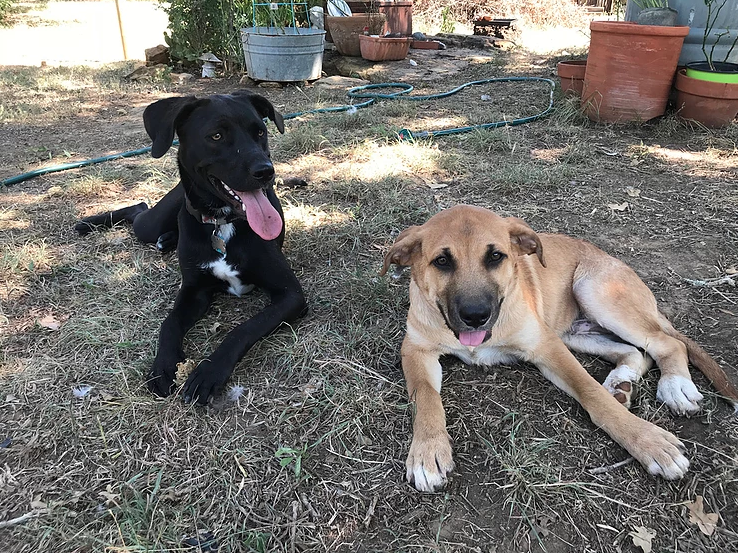
The 3 dogs have already alerted to something scurrying around in the woods one evening as well as a 4.5′ long rattlesnake that was coiled and ready to strike. Ellie, who has been bitten by a snake before, was staying far away from the snake, as were the pups. They were barking like mad, and then we heard the rattle. Dusty and I were both home and never moved so fast in our lives!
Slowly but surely our routine is smoothing itself out. It’s a little crazy and hectic, but for having 2 young puppies I thought it would be a lot worse. They are very low maintenance and only 4.5 months old! I know in a couple of months they will be very reliable and trustworthy, I can see it in their personalities.
If there are any questions about our fence Dusty & I are happy to help answer them. It’s hard to give a full fencing tutorial over a blog, since there are a lot of little steps that I can elaborate more on if needed. Just leave a comment or DM me on instagram @oliviapkramer.
Thanks for reading, as always! It’s great to be able to share our experiences!
Olivia
